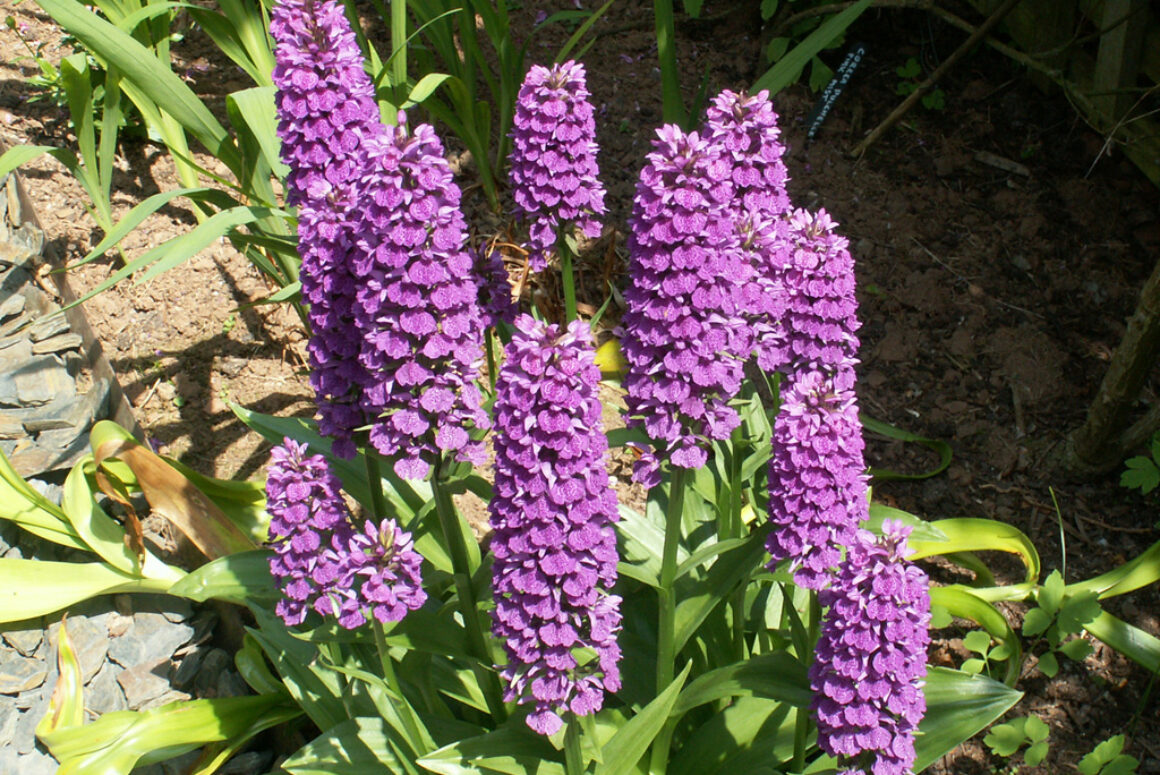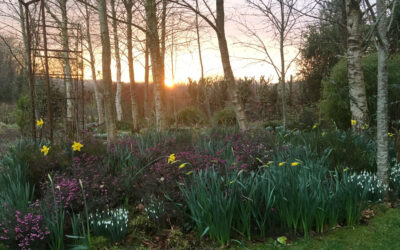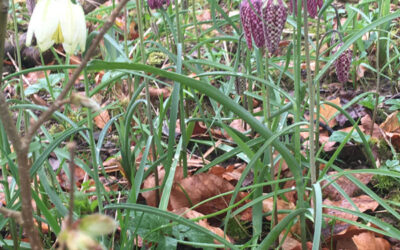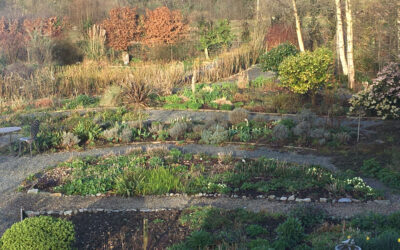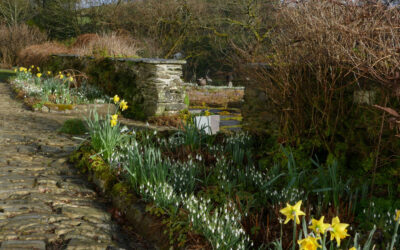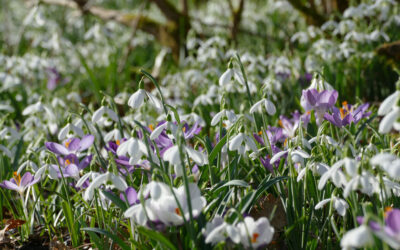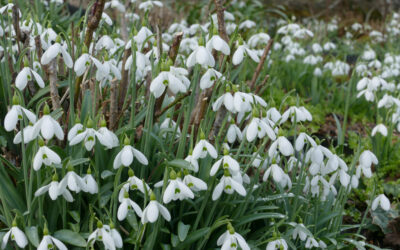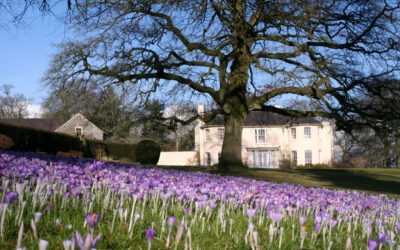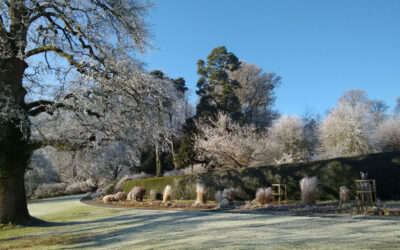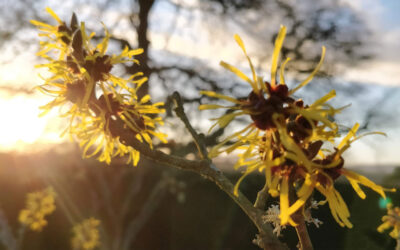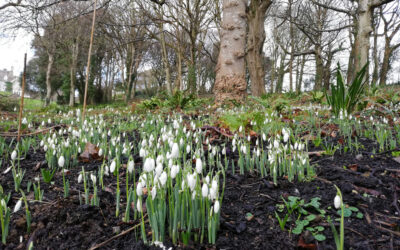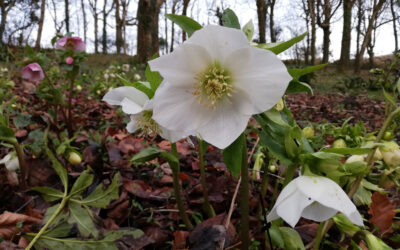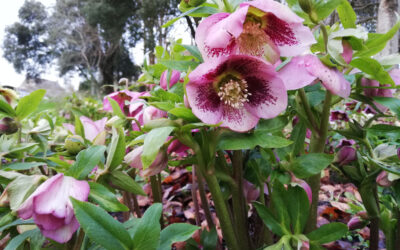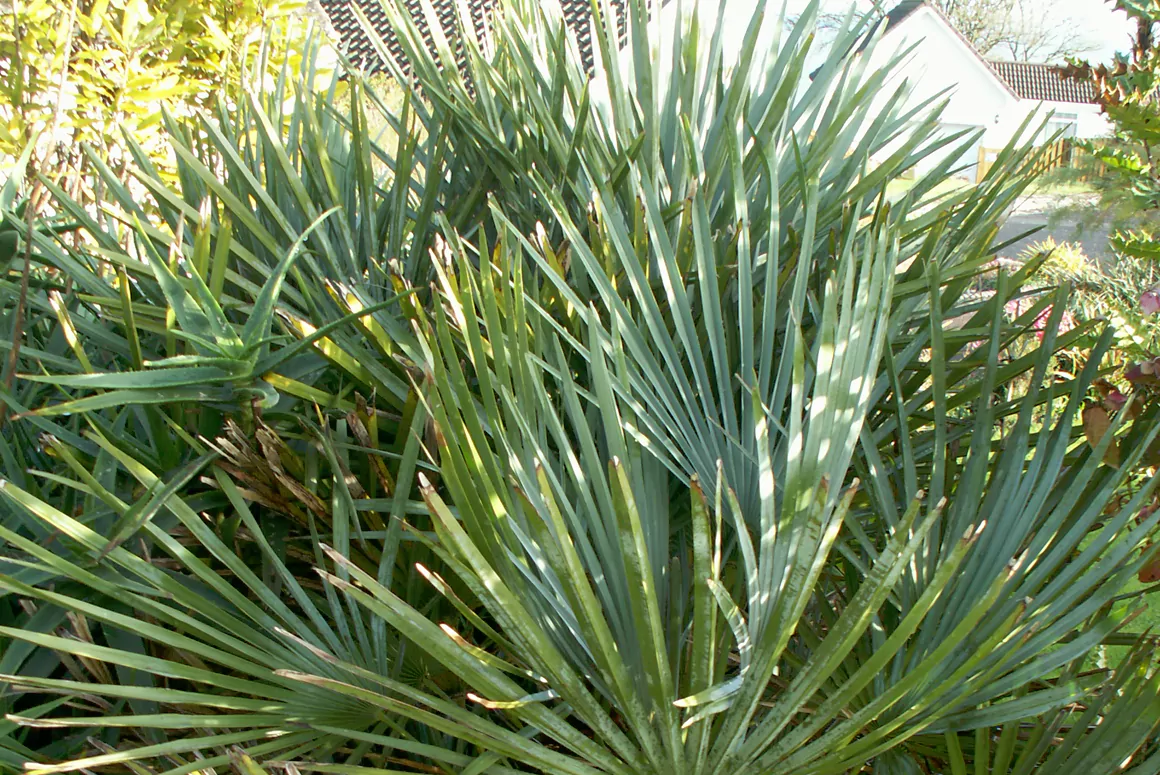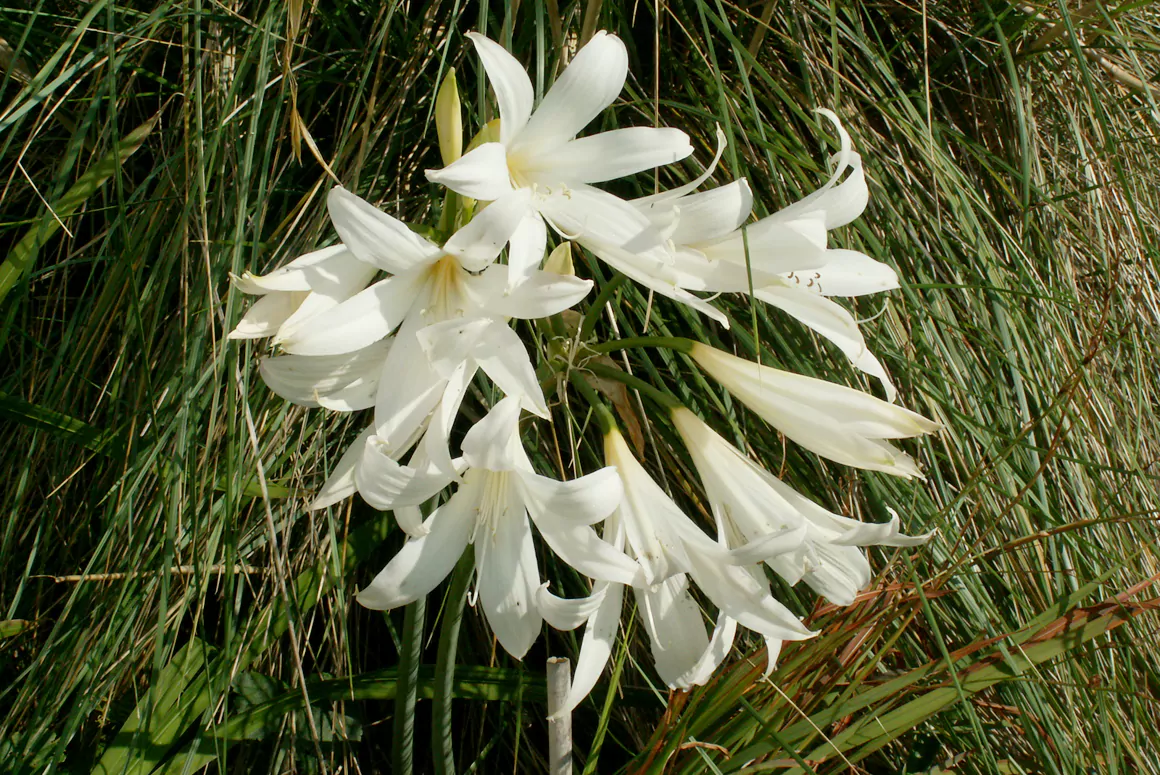![]()
I leant upon a coppice gate
When Frost was spectre-gray,
And Winter’s dregs made desolate
The weakening eye of day.
The tangled bine-stems scored the sky
Like strings of broken lyres,
And all mankind that haunted nigh
Had sought their household fires.Thomas Hardy (1840-1928)
As I write this article, the first rounds of vaccination against the Covid virus are imminent and we may at last be progressing to the normality that we once knew. For our own part, a retreat to the garden has provided welcome relief and reminded us how essential it is to mental health.
For many people the word “orchid” conjures up a world of tropical forests full of vine covered trees and luxuriant foliage or flamboyant multi-coloured flowers in garden centres. But orchids can be found in all continents except Antarctica. Many of us in rural areas will be familiar with the smaller members of the family, which occur in uncultivated parts of our own countryside.
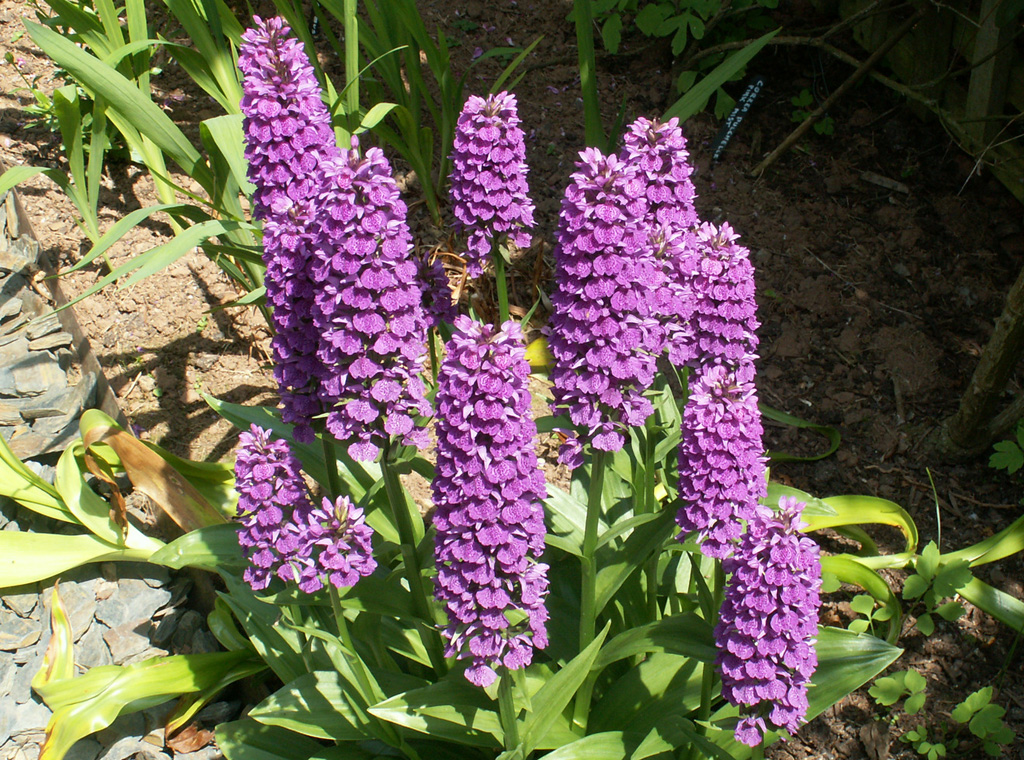
In my own garden Dactylorhiza fuchsii, the common spotted orchid, has spontaneously occurred and established several small clumps. As lovely as our native species are, they cannot provide the impact of some of their european relatives. Dactylorhiza elata or the robust marsh orchid, which is several times larger than our native species, is found throughout the continent and favours moist, well drained, humus rich soils in light shade. It will have to be sourced from specialist nurseries and is relatively expensive, but rewards with an impressive display. It is best divided in the spring and has been quick to increase, with my own plant doubling its tubers each year.
Cypripediums, or slipper orchids, offer more of a challenge and in my experience will not prosper unless special preparations are undertaken. After several expensive failures I have realised that they do not flourish in normal garden soils but require an inorganic mixture which holds moisture but is extremely free draining. I have excavated an area 6 inches deep and replaced the soil with a mixture of perlite, bark, pine needles and baked clay granules (Seramis). Since there are no nutrients in this mix, plants will require weekly supplemental feeding during the summer. Cold protection in winter is unnecessary since they are quite hardy, however I have found it wise to cage the bed to avoid marauding blackbirds who scratch out the bed seeking worms. These are not plants for the beginner, but the experienced gardener will derive enormous pleasure when succeeding to bring them into flower.
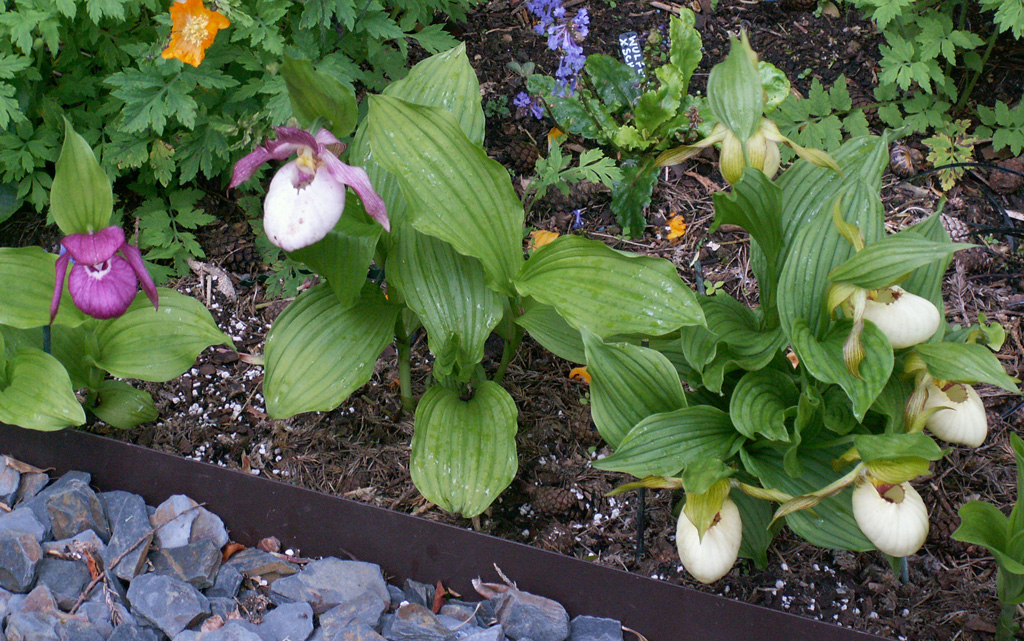
Of all the pleasures that the pandemic spoiled, perhaps the dearth of garden visits was the most disappointing. However, the National Garden Scheme is offering us a new start to the year (subject to government guidelines) with opportunities to visit some select properties.
Yr Efail in Tregaron continued to raise funds during lockdown and anticipates reaching their £2000 target. This has been achieved by Shelagh Yeomans’ innovative ideas including ‘Foster for a Fiver’, a project whereby customers enjoyed a filled basket/tub during the summer and returned in autumn for reuse. This garden has many quiet spaces in informal areas, to sit and reflect with grass paths wandering through mostly native woodland where an extra 2000 snowdrops were planted last year. Yr Efail opens when their snowdrops and narcissi are at their best!
Yr Efail
Click to view
The 1 ½ acre garden at Gelli Uchaf near Llandeilo is complimentary to a restored C17 Welsh longhouse and an 11 acre smallholding. Standing 800 feet above sea level with wonderful views, it has been created over 25 years for year-round interest. Early enjoyment is produced with many thousands of snowdrops, in over 200 cultivars including a unique Welsh Snowdrop Collection. Additionally, there are crocus, cyclamen, narcissi and many other spring bulbs amongst woodland plantings. Julian and Fiona Wormald, Gelli Uchaf’s knowledgeable and enthusiastic owners have created an organic garden with emphasis on nature and wildlife.
Gelli Uchaf
Click to view
January and February in the garden can be gloomy, dark, difficult months. However in Llysdinam at Newbridge on Wye spring is already starting to make its presence felt. Crocus tommasinus, which is one of my own favourite early flowering bulbs, creates pools of lilac and gold under Turkey Oak and Lime trees. Swathes of snowdrops, planted in the 19th century carpet the ground and dispense a sweet honey scent, which is mixed with that produced by winter flowering heathers under the orange trunks of the Scots Pine. The stems of varied cornus and Salix alba ‘Britzensis’ are reflected in the low winter light and bathe the edge of the lake in fiery flames. A visit to this garden in winter delivers colour, form and scent, enhanced by the promise of a spring yet to come.
Llysdinam
Click to view
Rosamund and Peter Davies are actively developing their garden Slade, into a horticultural gem. From formal areas by the house large swathes of grass tumble down a secluded valley, sheltered by an imposing belt of woodland, enlivened by snowdrops, fritillaries, and hellebores. Situated next to the sea you should ensure a visit includes the gorgeous Southerndown beach.
Slade
Click to view
All the above gardens provide inspiration at this early time but will also repay visiting later in the year. Your visits help raise funds to support NGS charities- more important than ever. In 2020 NGS donations included £425,000 to Macmillan Cancer, the third of 5 instalments for the new Y Bwthyn NGS Macmillan Palliative Care Unit in the Royal Glamorgan Hospital in Llantrisant which opened in 2019.
NGS Open Gardens
Welsh Country has two NGS open garden sections. The first ‘Open Gardens’ are gardens that are open on specific days and the ‘Long Term Open Gardens’ which are by appointment only. There is a search facility on each page so simply search for a garden name or an area of Wales (i.e. Swansea) you’d like to visit.


